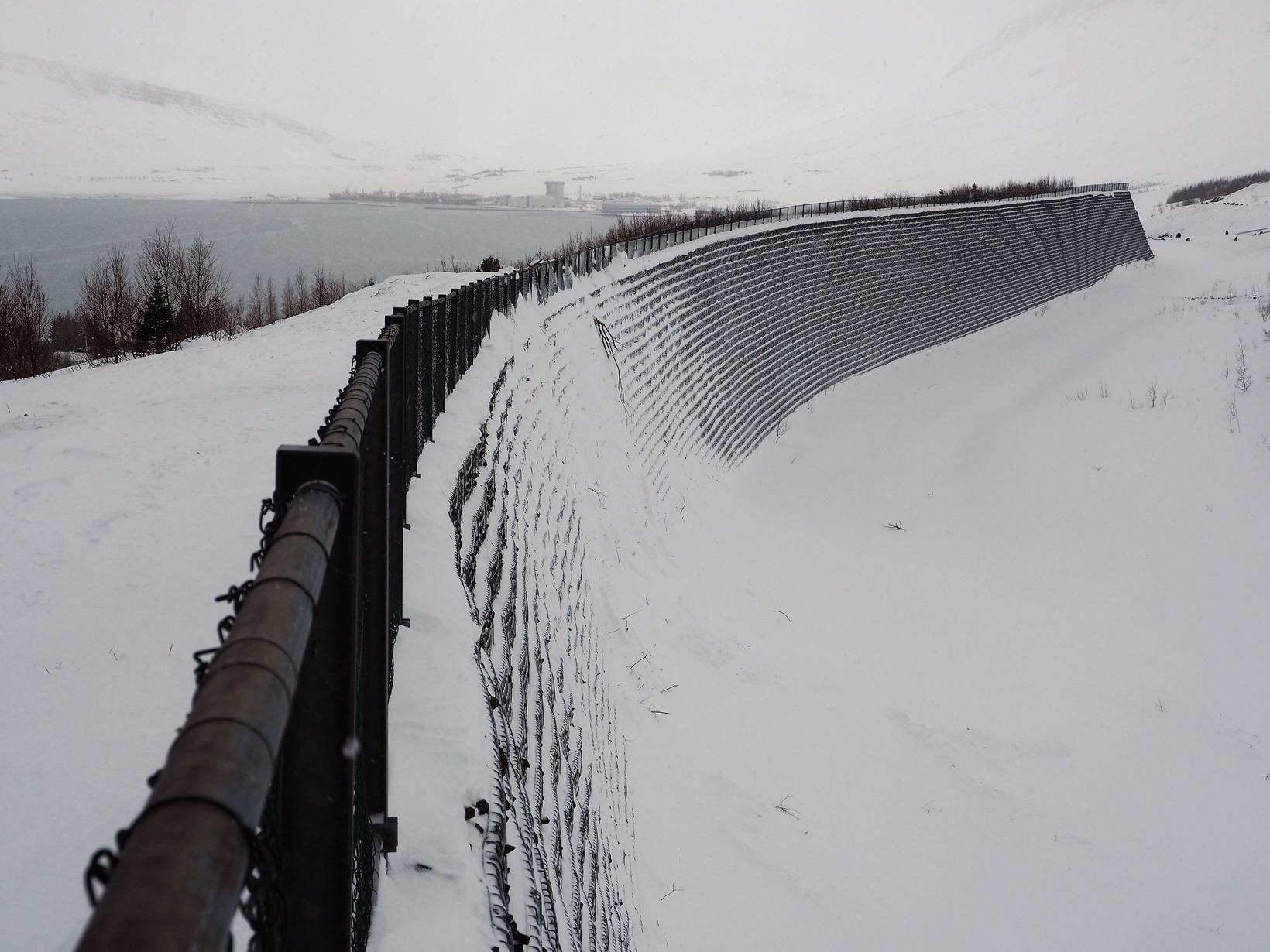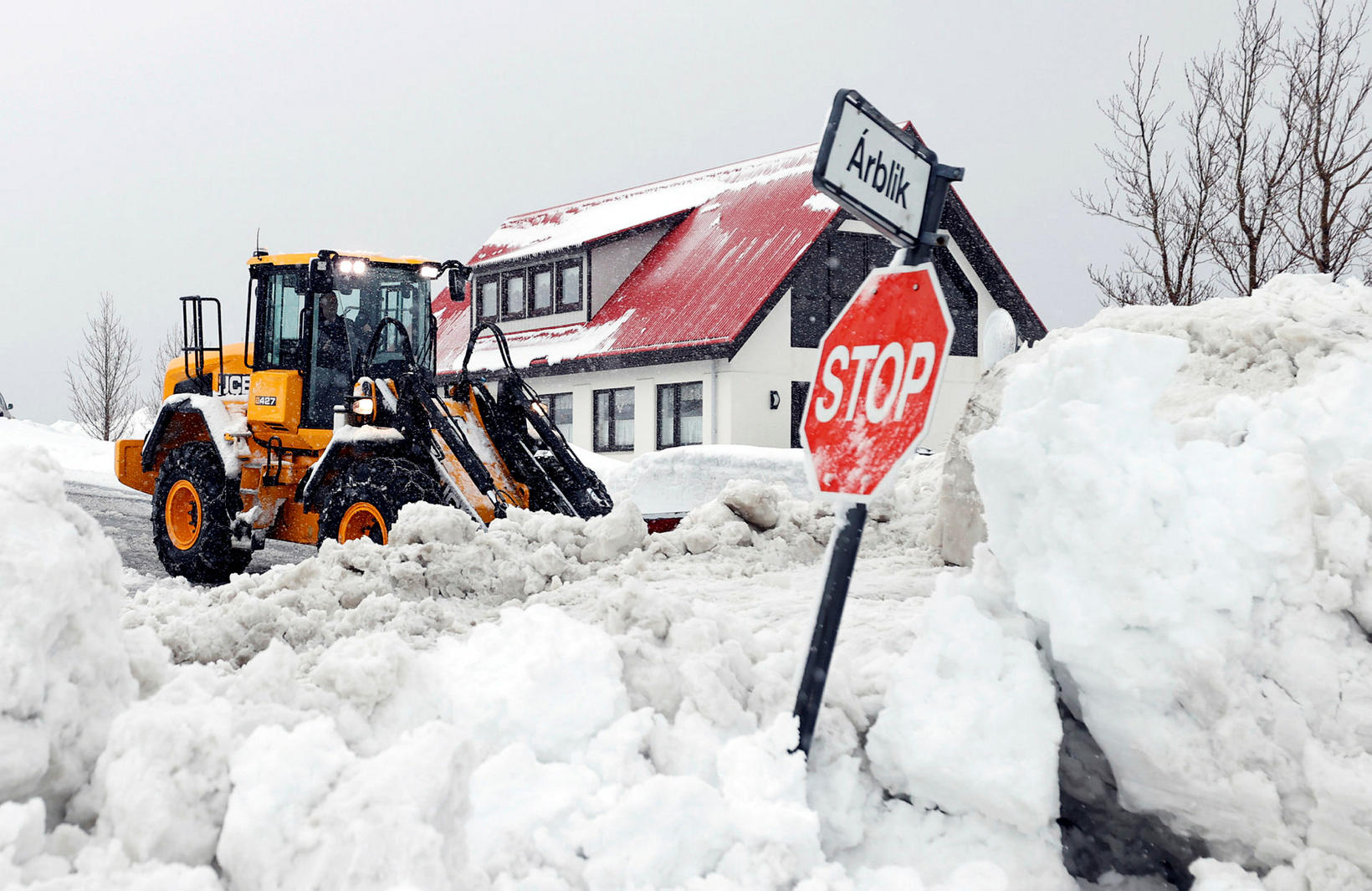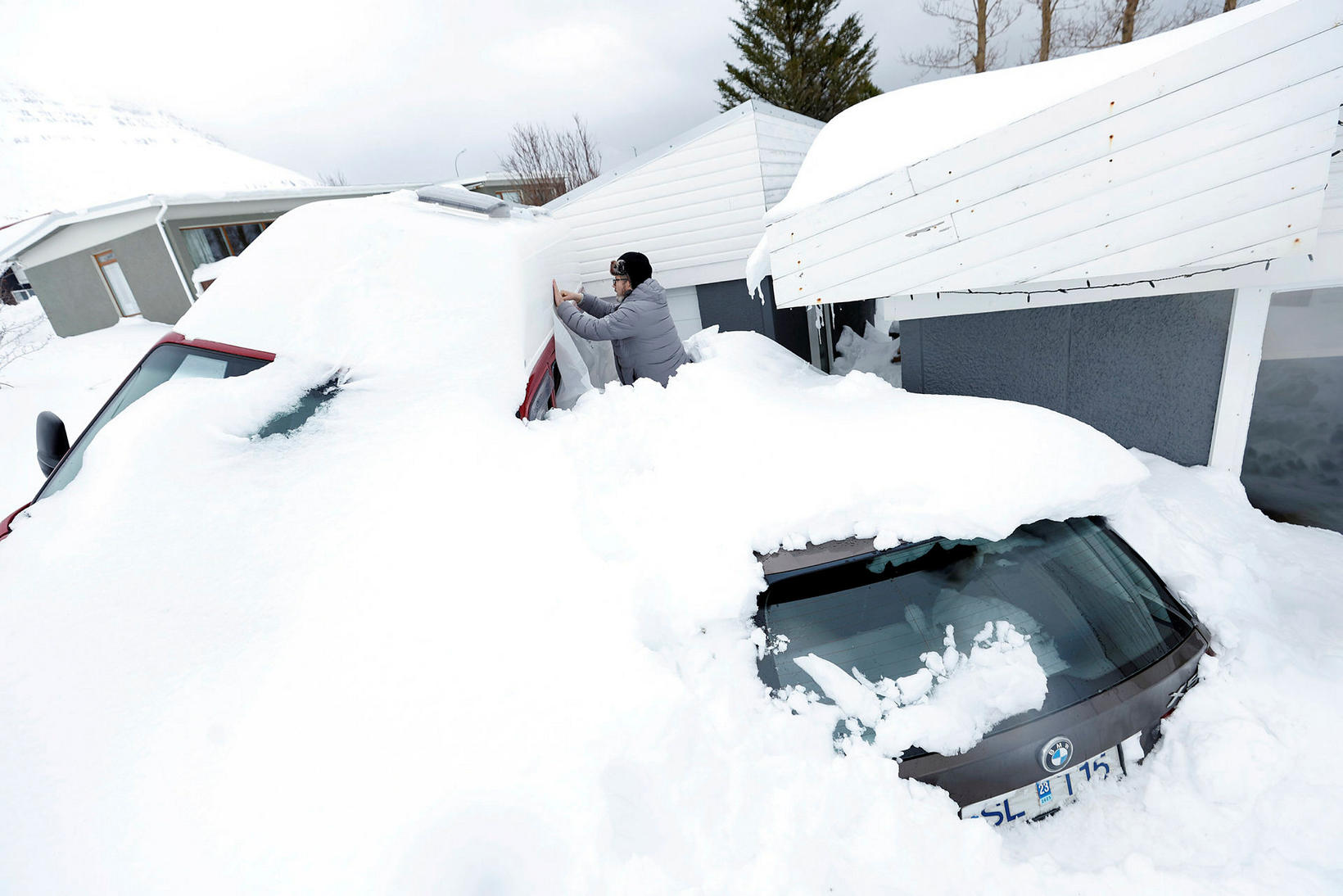The avalanche would probably have reached the settlement
Here you can see the cross 17 metre high cross barrier last Monday, March 27th, below Drangagil gorge in Neskaupstaður. The avalanche hit the cross barrier at immense speed and the snow was caught in the barrier and was thrown up into the air. Last Thursday another avalance was heeding the same way but was halted before it hit the barrier.
This is reported on the website of the Icelandic Met Office, where the avalanches that fell last week are being reviewed.
“The flood from Drangagil can likely have reached the settlement and it is not unlikely that the same is true of the avalanche from Innra-Tröllagil,” it reads.
“Such floods are not common, and it can be assumed that these two largest floods in the recent avalanches would have been the largest floods in the town in over 100 years, based on their potential or likely size without the barriers.”
It is noted that measurements will give a clearer picture of the extent of the flooding.
Working on getting the snow away off the streets last week in Neskaupstaður. mbl.is/Eggert Jóhannesson
Threw the flood high into the air
It is also recounted that on Thursday there was heavy precipitation, in the east and east-northeast wind. In the extreme southeast of Iceland, snow was mostly in the mountains, but rain or snow in the lowlands that day.
“Many avalanches fell again and again, both above and within Neskaupstaður. They were very different from the avalanches that fell on Monday. A lot more snow was in them, and they came down to moist snow in the lower part of the hills,” the summary reads.
“Most of them did not go as far and stopped about 150 m above the sea, but an avalanche struck the protective cones under Tröllagil gorge. The largest of these avalanches came from Drangagil gorge and struck the cones, and eyewitnesses saw how the cones threw the floodwater high into the air and then tossed it down from above the barrier.”
Halted just above the crossing barrier
Both Trölllagil and Drangagil are noted to have so-called source support structures or avalanche barrier structures in the upper part of the mountain, where there is a slope sufficient for an avalanche to go off.
“The purpose is to reduce the amount of snow that can be triggered by an avalanche. Above the settlement are dikes called ‘crossbarriers, because they lie across the course of an avalanche. They are 14-20 m high and very steep on the mountain side.
The damages to both houses and vehicles is substantial but thankfully nobody got hurt. mbl.is/Eggert Jóhannesson
Above the crossbarriers are two series of barriers, called protective cones, whose function is to reduce the energy and speed of avalanches and to disperse wet and loose snow avalanches, which often follow dry avalanches.
In Drangagil gorge, the avalanche started downstream of the source support structures and then hit the protective cones that halted the flood by scattering and throwing it into the air. The flood stopped just above the barrier.”











